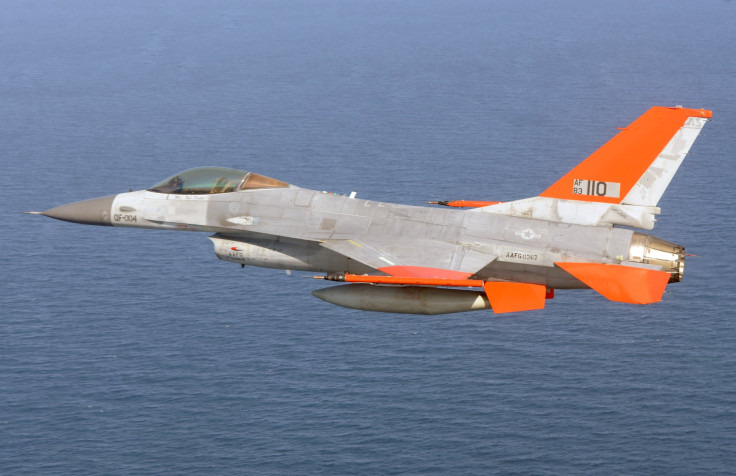Watch This US Air Force F-16 Fly Without A Pilot [VIDEO]
The F-16 Fighting Falcon has been the primary fighter jet of the U.S. Air Force for almost three decades, with 1,000 of them -- more than any other warplane in the U.S. inventory -- currently in service, and thousands more flying for the air forces of two dozen other nations. Lockheed Martin (NYSE:LMT) and overseas partners have produced 4,500 so far. With those numbers, seeing one fly isn’t unusual.
What is extremely strange, though, is seeing an F-16 fly without a pilot.
Yet that’s exactly what happened at Tyndall Air Force Base in Florida recently, when a modified QF-16 drone flew without a pilot for the first time, demonstrating its ability to fly under remote control and do the same things a jet with a real live pilot could do.
According to a statement by Boeing (NYSE:BA), which converted the jet to a remotely piloted drone, the QF-16 Full Scale Aerial Target demonstrates “the next generation of combat training and testing.”
The unmanned plane reached an altitude of 40,000 feet (12,000 m) over the Gulf of Mexico and a speed of Mach 1.47, almost one and half times the speed of sound or about 1,100 mph (1,770 kph). The controllers were Air Force test pilots in a ground station.
“It was a little different to see an F-16 take off without anyone in it, but it was a great flight all the way around,” said Lt. Col. Ryan Inman, Commander, 82nd Aerial Targets Squadron. “Now we have a mission-capable, highly sustainable full-scale aerial target to take us into the future.”
And being used as a target is ultimately what these expensive drones are meant for. They are highly effective training tools for pilots, who try to shoot them down with live weapons -- and don’t always succeed: Drones converted from fighter jets are as fast and agile as the real thing.
Boeing said in 2010 that it had received a $69.7 million contract from the U.S. Air Force for the first phase of the QF-16 program. The first six unmanned jets have been delivered, and up to 126 will be converted beginning in the fourth quarter.

© Copyright IBTimes 2024. All rights reserved.






















